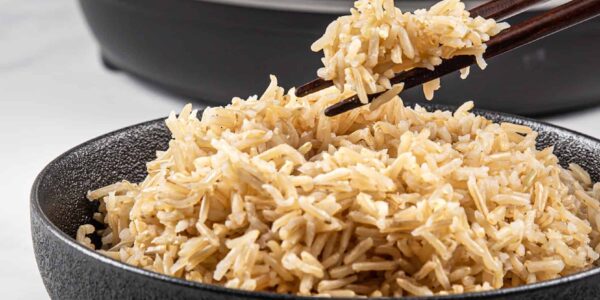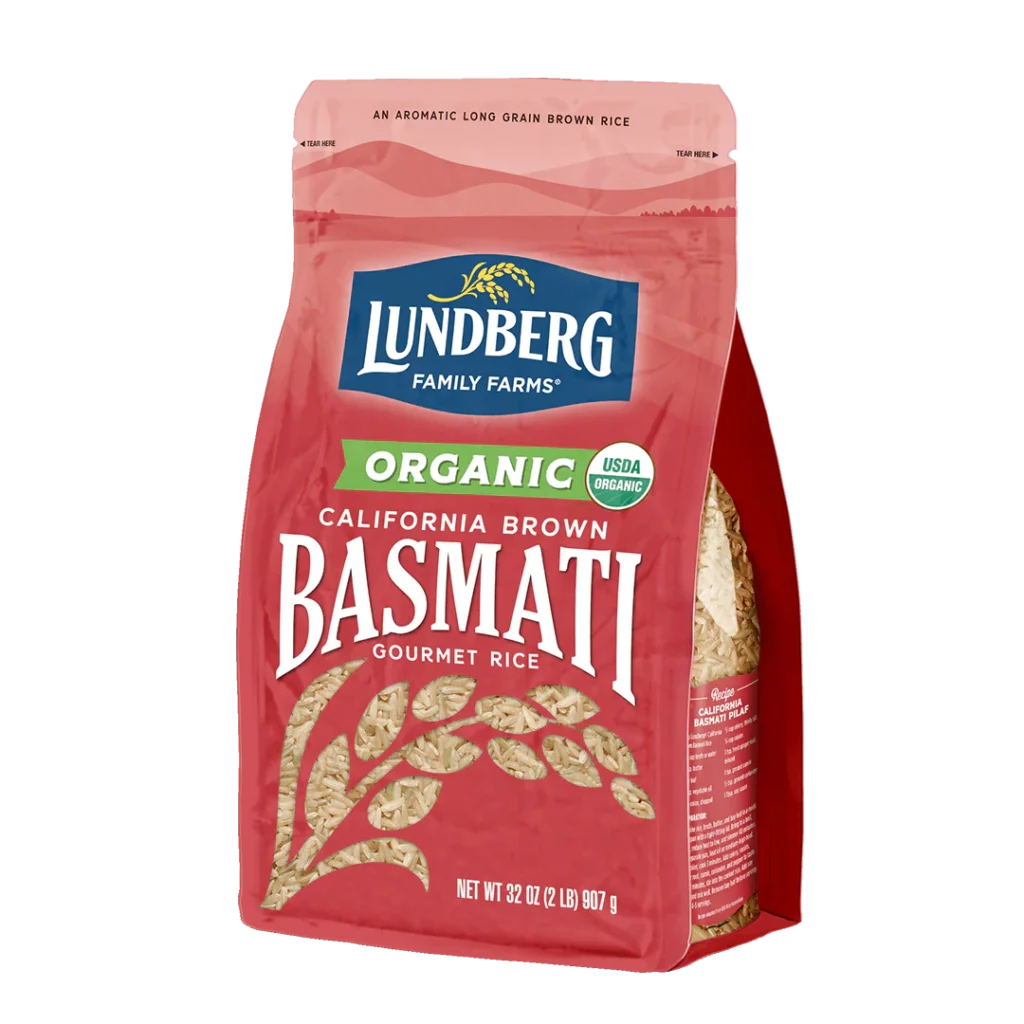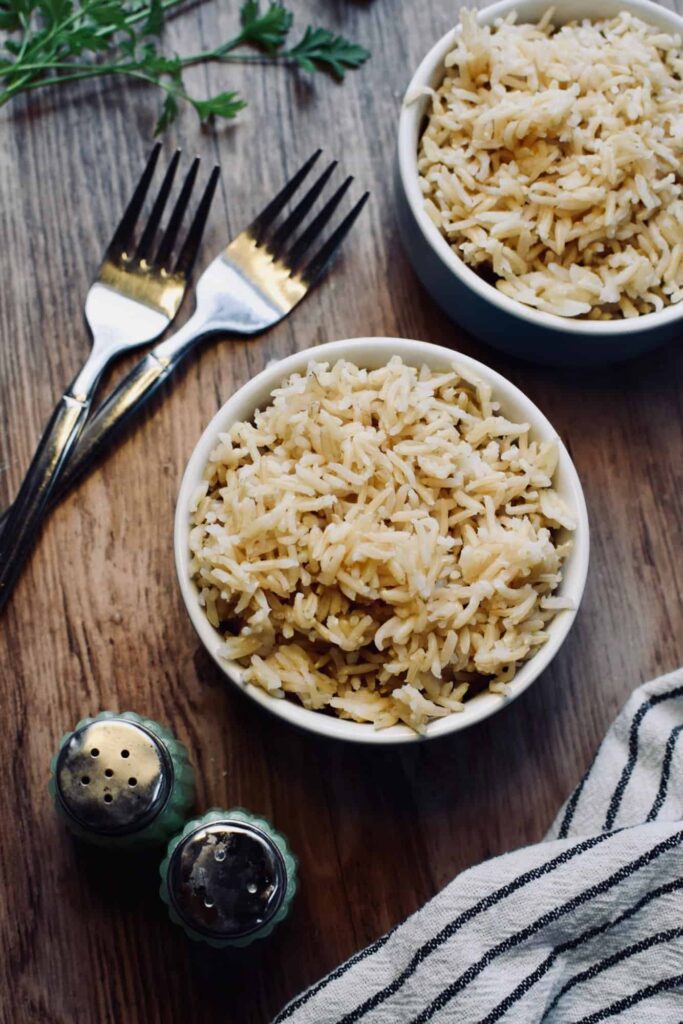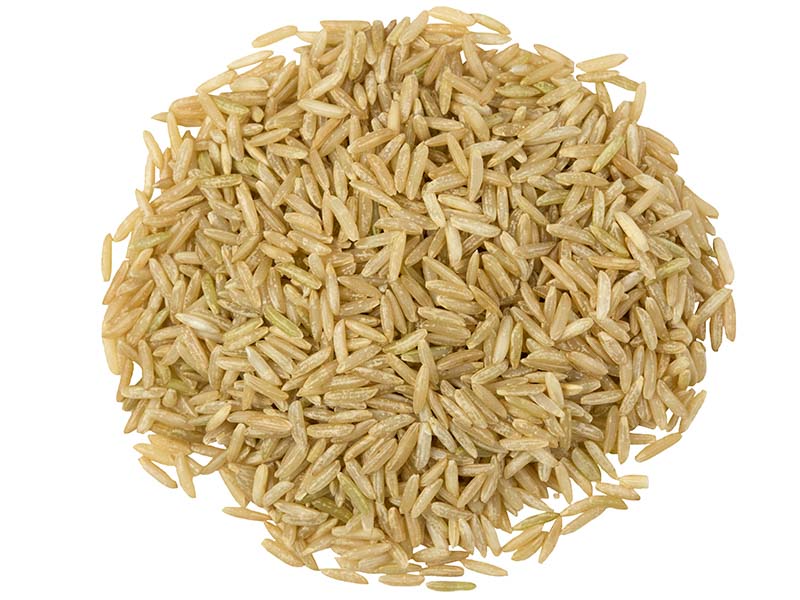Basmati Rice Brown Rice: Discover Their Health Benefits

Rice is a staple in many diets. Basmati rice and brown rice are two popular choices.
Introduction to Basmati Rice Brown Rice
Both types offer unique flavors and benefits. Basmati rice is known for its long grains and fragrant aroma, making it a favorite in many Asian dishes. Brown rice, on the other hand, retains its bran layer, providing more fiber and nutrients.
Choosing between these two can depend on personal preference and health goals. Each has its own set of advantages. In this blog, we will explore the characteristics, nutritional benefits, and culinary uses of both basmati rice and brown rice. By the end, you will have a better understanding of which rice might suit your needs best. Stay tuned to learn more about these two versatile grains!

Introduction To Basmati And Brown Rice
Basmati rice has its roots in India and Pakistan. It has been grown for many years. People love its unique aroma and long grains. Brown rice is a staple in many countries. It is less processed than white rice. It keeps its bran layer, making it more nutritious.
Basmati rice and brown rice are both healthy. Brown rice has more fiber and minerals. Basmati rice is lower in fat. Here is a simple comparison:
| Nutrient | Basmati Rice | Brown Rice |
|---|---|---|
| Calories (per 100g) | 121 | 111 |
| Fiber (g) | 0.6 | 1.8 |
| Protein (g) | 3.5 | 2.6 |
| Fat (g) | 0.2 | 0.9 |
Both types of rice can be part of a balanced diet. Choose the one that fits your taste and needs.
Unique Features Of Basmati Rice
Basmati rice is known for its unique aroma. It has a sweet, nutty smell. The scent makes it special and loved by many. This aroma comes from a natural compound. The name of the compound is 2-acetyl-1-pyrroline. This compound gives basmati its distinct flavor. The aroma becomes stronger when cooked. Many people enjoy the fragrance as much as the taste. This makes basmati a popular choice in kitchens around the world.
Basmati rice is perfect for many dishes. It pairs well with curries and stir-fries. People often use it in biryanis and pilafs. The grains stay separate and fluffy after cooking. This texture makes it ideal for a variety of recipes. Basmati is also a great choice for rice salads. Its flavor blends well with vegetables and spices. Many chefs love using basmati for its versatility. It’s a favorite in both home and restaurant kitchens.
Distinct Traits Of Brown Rice
Brown rice is a whole grain. It keeps its outer layers. These layers are full of nutrients. Fiber helps with digestion. It makes you feel full. Vitamins and minerals are in brown rice. They help your body stay healthy. Eating brown rice is good for your heart.
Cooking brown rice takes time. It needs more water. Use two cups of water for one cup of rice. Boil the water first. Then add the rice. Cook it for 45 minutes. Let it sit for a few minutes. Fluff the rice with a fork. Brown rice is chewy and nutty. It is tasty with vegetables or meat.

Nutritional Profile Of Basmati Rice
Basmati rice is rich in essential vitamins and minerals. It contains vitamins like B1, B6, and niacin. These vitamins help in energy production. Minerals such as magnesium and phosphorus are also present. They support bone health. Iron in basmati helps make blood cells. Zinc boosts the immune system.
Basmati rice is a source of energy. It has low calories compared to some other rice types. One cup of cooked basmati has about 200 calories. It is a good choice for a balanced diet. The calorie content varies with cooking methods. Steamed rice has fewer calories than fried.
Nutritional Profile Of Brown Rice
Brown rice has high fiber content. This is good for your tummy. Fiber helps you feel full longer. It also keeps your digestion smooth. Eating foods with fiber is healthy. Your body needs it every day.
Brown rice has important antioxidants. These protect your body from harm. They help fight bad cells. Antioxidants keep you healthy. They are like tiny bodyguards. Eating food with antioxidants is smart. It helps you stay strong.
Health Benefits Of Basmati Rice
Basmati rice has a low glycemic index. This means it helps control blood sugar. People with diabetes can enjoy it safely. Eating basmati rice can prevent sharp spikes in sugar levels. It helps in managing diabetes better. Many doctors recommend basmati rice for diabetic patients.
Basmati rice is easy to digest. It is gentle on the stomach. Helps in preventing bloating. Rich in fiber, it aids digestion well. Fiber helps in regular bowel movements. This rice supports a healthy gut. Many people find it soothing for the stomach.
Health Benefits Of Brown Rice
Brown rice is rich in fiber. Fiber helps keep the heart healthy. Brown rice has magnesium. Magnesium supports a strong heart. Brown rice contains antioxidants. Antioxidants fight against heart disease. Eating brown rice can lower cholesterol. Low cholesterol is good for heart health.
Brown rice is low in calories. Low calories help manage weight. Brown rice is filling. It keeps you full for long. Brown rice has fiber. Fiber aids in weight control. Brown rice is a whole grain. Whole grains are healthy choices. Choosing brown rice can help lose weight. It is a smart choice for dieting.
Choosing Between Basmati And Brown Rice
People often choose rice based on dietary needs. Basmati rice is light and fluffy. It is often loved for its unique aroma. Brown rice has more fiber and nutrients. It keeps the stomach full for longer. Some people eat brown rice for health benefits. Others prefer the taste of basmati. Choosing the right rice depends on what you like. Both types can fit into a healthy diet.
Cooking rice can be simple. Basmati rice cooks quickly. It takes about 15-20 minutes. Brown rice needs more time. It takes around 40 minutes to cook. Basmati rice needs less water. Brown rice requires more. Each type of rice has its own cooking method. Understanding this helps make the best choice.
Incorporating Rice Into Your Diet
Basmati rice is perfect for fragrant pilafs and light salads. It adds a special touch to your meals. Brown rice works well in stir-fries and hearty soups. Its nutty flavor makes dishes tasty. Try mixing both rice types with vegetables and spices. This creates a delicious dish. Add chicken or tofu for protein. Enjoy experimenting with these recipe ideas. Your meals will become more exciting.
Serve basmati rice with grilled fish or curried vegetables. It complements the flavors well. Brown rice pairs nicely with roasted veggies and savory sauces. Its texture is perfect for these dishes. Use rice as a side dish or a main course. Add a squeeze of lemon for extra zest. Sprinkle some fresh herbs for a fresh taste. Your family will love these serving suggestions.

Frequently Asked Questions
Is Brown Rice Healthier Than Basmati Rice?
Brown rice is generally healthier than basmati rice. It contains more fiber, vitamins, and minerals, aiding digestion and heart health. Basmati rice is lower in calories and has a lower glycemic index, making it a better choice for blood sugar management. Choose based on dietary needs and health goals.
What Is The Ratio Of Water To Rice For Brown Basmati Rice?
Use a 2:1 water to rice ratio for brown basmati rice. For 1 cup of rice, add 2 cups of water. This ensures proper cooking and fluffy rice. Adjust water slightly for preferred texture. Brown basmati rice absorbs more water than white rice.
What Is The Healthiest Rice You Can Eat?
Brown rice is the healthiest option. It retains its bran and germ layers, providing essential nutrients and fiber.
Can You Get Brown Basmati Rice?
Yes, you can get brown basmati rice. It’s available in most grocery stores and online shops.
Conclusion
Choosing between basmati rice and brown rice depends on your needs. Basmati rice offers a fragrant taste and quick cooking time. Brown rice provides more fiber and nutrients. Both types have unique benefits. Incorporate them into your meals for a balanced diet.
Whether you prefer the aroma of basmati or the health benefits of brown rice, both are excellent choices. Enjoy experimenting with different recipes. Find what works best for you and your family. Eating a variety of grains can improve your overall health.
Enjoy your rice journey!




Leave a Reply